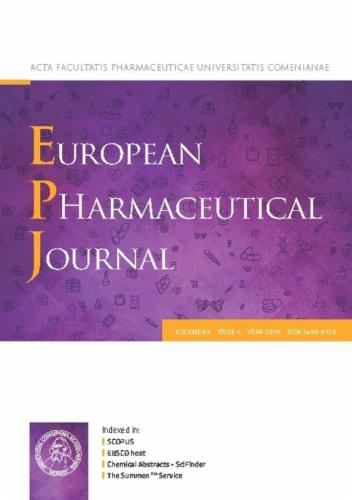Implementation of indication restrictions made by European regulatory action for antibiotics – amoxicillin
IF 4.3
3区 医学
Q1 PHARMACOLOGY & PHARMACY
引用次数: 0
Abstract
Introduction
Antibiotics are important tools in the armamentarium for treating infectious diseases. In Europe most available antibiotics have been licensed in the past through so-called national procedures, meaning that antibiotic labels (e.g., therapeutic indications, posology, contra-indications) may vary across European member states. As a result, antibiotics are prescribed in the EU with different directions of use. This study aims to evaluate whether on streamlining the product information of antibiotics in the period 2007–2020 has been sufficiently implemented. Specifically, it examines whether member states and pharmaceutical companies have fulfilled their obligation to update the therapeutic indication sections of the amoxicillin containing medicines label according to the outcomes of the referral.
Method
We performed a follow-up of the previous study measuring five years after the referral’s conclusion and decision whether and how complete the indication sections of the product information for one of 15 antibiotics that underwent referral procedures during the previous study period (2007–2020) were updated. We have chosen amoxicillin as case example for this study as it is the most frequently used antibiotic in the primary care setting, and the referral took place mid-term 2007–2020,–with a conclusion in 2015.
Results
In total we could identify 806 medicinal products with an active pharmaceutical ingredient amoxicillin available in 2015 across 30 EEA countries and the UK. We found that in 22 % (176 out of 806) amoxicillin products still included therapeutic indications that should have been removed from the SmPC following the 2015 referral procedure. The most frequent therapeutic indications that were incorrectly still listed in the indication sections of the product information were endocarditis treatment (oral formulation) in 55 % (97 out of 176 products), followed by lower respiratory tract infections 49 % (87 out of 176 products), and upper respiratory tract infections 46 % (81 out of 176 products).
Conclusion
Inconsistencies in therapeutic indications continue to pose challenges, potentially impacting the safe and effective use of antibiotics. Such discrepancies can lead to misuse or inappropriate prescribing of crucial antibiotics, contributing to the growing problem of antimicrobial resistance. Our study highlights the importance of following up on and verifying the implementation of finalized regulatory procedures at EU level. Further research is needed to understand the root causes of incomplete implementations, possibly also due to incomplete updates of the EMA Article 57 database.
实施欧洲抗生素-阿莫西林管制行动的适应症限制
前言抗生素是医院治疗传染病的重要工具。在欧洲,大多数可用的抗生素过去都是通过所谓的国家程序获得许可的,这意味着抗生素标签(例如,治疗适应症、病理学、禁忌症)可能因欧洲成员国而异。因此,抗生素在欧盟的处方上有不同的使用说明。本研究旨在评估2007-2020年期间抗生素产品信息的精简是否得到充分实施。具体而言,它审查了成员国和制药公司是否履行了根据转诊结果更新含阿莫西林药物标签的治疗适应症部分的义务。方法:我们在转诊结论得出5年后对先前的研究进行随访,并决定是否更新以及如何更新在先前研究期间(2007-2020年)进行转诊程序的15种抗生素中的一种的产品信息的适应症部分。我们选择阿莫西林作为本研究的案例,因为它是初级保健环境中最常用的抗生素,并且转诊发生在2007-2020年中期,并于2015年得出结论。结果:2015年,我们在30个欧洲经济区国家和英国共鉴定出806种含有阿莫西林活性成分的药品。我们发现,22%(806件中有176件)的阿莫西林产品仍然包含在2015年转诊程序后本应从SmPC中删除的治疗适应症。在产品信息的适应症部分中仍然错误列出的最常见的治疗适应症是心内膜炎治疗(口服制剂),占55%(176种产品中的97种),其次是下呼吸道感染49%(176种产品中的87种),上呼吸道感染46%(176种产品中的81种)。结论治疗指征的不一致性继续构成挑战,可能影响抗生素的安全有效使用。这种差异可能导致关键抗生素的误用或不当处方,从而导致日益严重的抗微生物药物耐药性问题。我们的研究强调了在欧盟层面跟进和验证最终监管程序实施的重要性。需要进一步的研究来了解不完整实施的根本原因,也可能是由于EMA第57条数据库的不完整更新。
本文章由计算机程序翻译,如有差异,请以英文原文为准。
求助全文
约1分钟内获得全文
求助全文
来源期刊
CiteScore
9.60
自引率
2.20%
发文量
248
审稿时长
50 days
期刊介绍:
The journal publishes research articles, review articles and scientific commentaries on all aspects of the pharmaceutical sciences with emphasis on conceptual novelty and scientific quality. The Editors welcome articles in this multidisciplinary field, with a focus on topics relevant for drug discovery and development.
More specifically, the Journal publishes reports on medicinal chemistry, pharmacology, drug absorption and metabolism, pharmacokinetics and pharmacodynamics, pharmaceutical and biomedical analysis, drug delivery (including gene delivery), drug targeting, pharmaceutical technology, pharmaceutical biotechnology and clinical drug evaluation. The journal will typically not give priority to manuscripts focusing primarily on organic synthesis, natural products, adaptation of analytical approaches, or discussions pertaining to drug policy making.
Scientific commentaries and review articles are generally by invitation only or by consent of the Editors. Proceedings of scientific meetings may be published as special issues or supplements to the Journal.

 求助内容:
求助内容: 应助结果提醒方式:
应助结果提醒方式:


